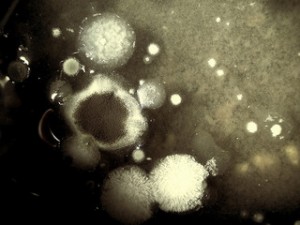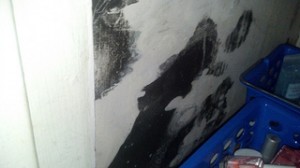When the right elements are present in an area, mold can grow quickly in various places. Some of these essential elements include water, oxygen and the right temperature.
When mold begins to multiply in specific areas, it will also produce spores. As the spores begin to grow and take root, the molds will be more difficult to get rid of and destroy. Some groups of mold are harmful to human beings but they only include a few species. Once located, the next step should be finding out how to get rid of mold as quickly as possible since they can cause a variety of health complications.
Researching and Understanding Mold

How-to-get-rid-of-mold instructions does not have to be difficult when the processes are understood. Therefore, it is important to learn as much as possible about mold and its origin before trying to get rid of them completely. Listed below are some of the key points to consider researching about:
- Distinguishing between different types of mold
- Determining where mold problems are coming from
- How mold grows
- Identifying molds in a house or in the basement
- Symptoms of mold exposure and the health complications
- Removing mold permanently
- Protecting children from mold
This should help understand how mold grows, the types of mold that exists in specific areas and which method should be selected to get rid of the identified mold.
Finding the source and the origins of the mold are extremely important in finding a permanent solution instead of using a temporary solution.
Instructions On How To Get Rid of Mold
In order to start with the cleaning process of removing the black molds, here is an overview of the steps:
- First and foremost, always make sure to wear protective clothing such as a face mask, rubber

pfmurray88 gloves, and apron. This is to make sure that the toxins being released by the mold will not affect you during the cleaning process.
- Examine the area covered by the black mold from the visible to the hidden parts. If the molds are not be completely removed, they may continue to grow and multiply.
- Once the area covered by the mold is determined, cover the whole place with a plastic sheet or duct tape to prevent the spores and toxins from being released airborne and travel to the other parts of the house.
- Remove all the fabrics in the areas affected by the mold, if necessary. If the walls are affected but not damp, a good repainting can do the job. However, if the wall is damaged due to the mold and moist, then it should be replaced.
- Apply the selected cleaning solution. The product must be able to clean all the fabrics and walls. Some scrubbing might be needed on the stains.
- Rinse the area with clean water and make sure to clean it dry down to the hard to reach spot.
- For wall treatment, paint the wall using a primer then leave it to dry out. Once finished, paint the wall with your desired color over the primer and leave it to dry.
- Get into the cause of the moisture inside the house. In case of a severe infestation, it may be best to have a specialist check the home to assess the cause of the problem.
Mold Exposure and Health Conditions
Some individual with pre-existing health condition could experience severe allergic reaction or an infection, among other symptoms, when they come into contact with mold. Stay alert and look for any signs or changes in your condition when trying to remove mold from your house. Getting some professional help in such cases may be the smart choice.
